Path of Exile Beginners Guide — Leagues, Classes and Leveling
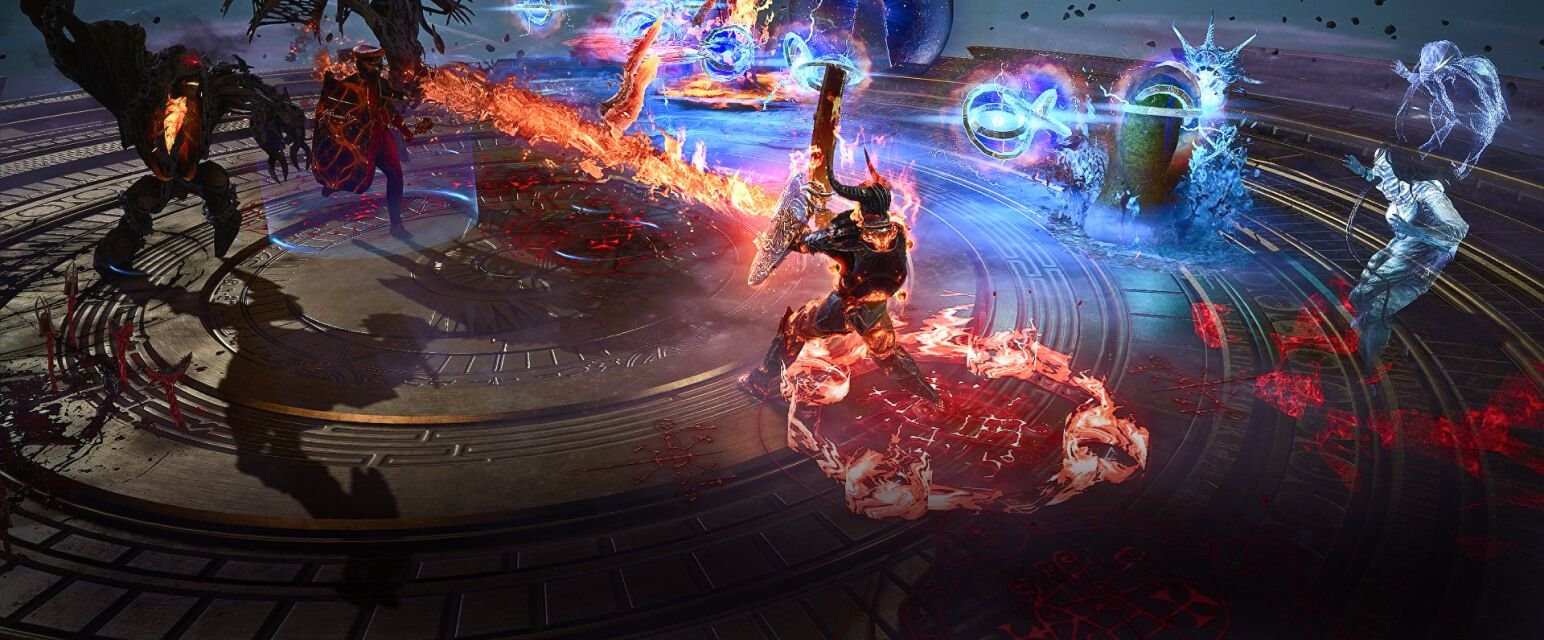
Not enough journeys in isometric Dark Fantasy universes, Diablo is boring, and Lost Ark seems too childish? Then pay attention to Path of Exile. It’s one of the best ARPG projects of recent years, a true legacy of Diablo 2 and a true hardcore experience for all genre fans. For all newcomers to Wraeclast we’ve prepared a beginners guide, which allows you to quickly understand gameplay and mechanics.
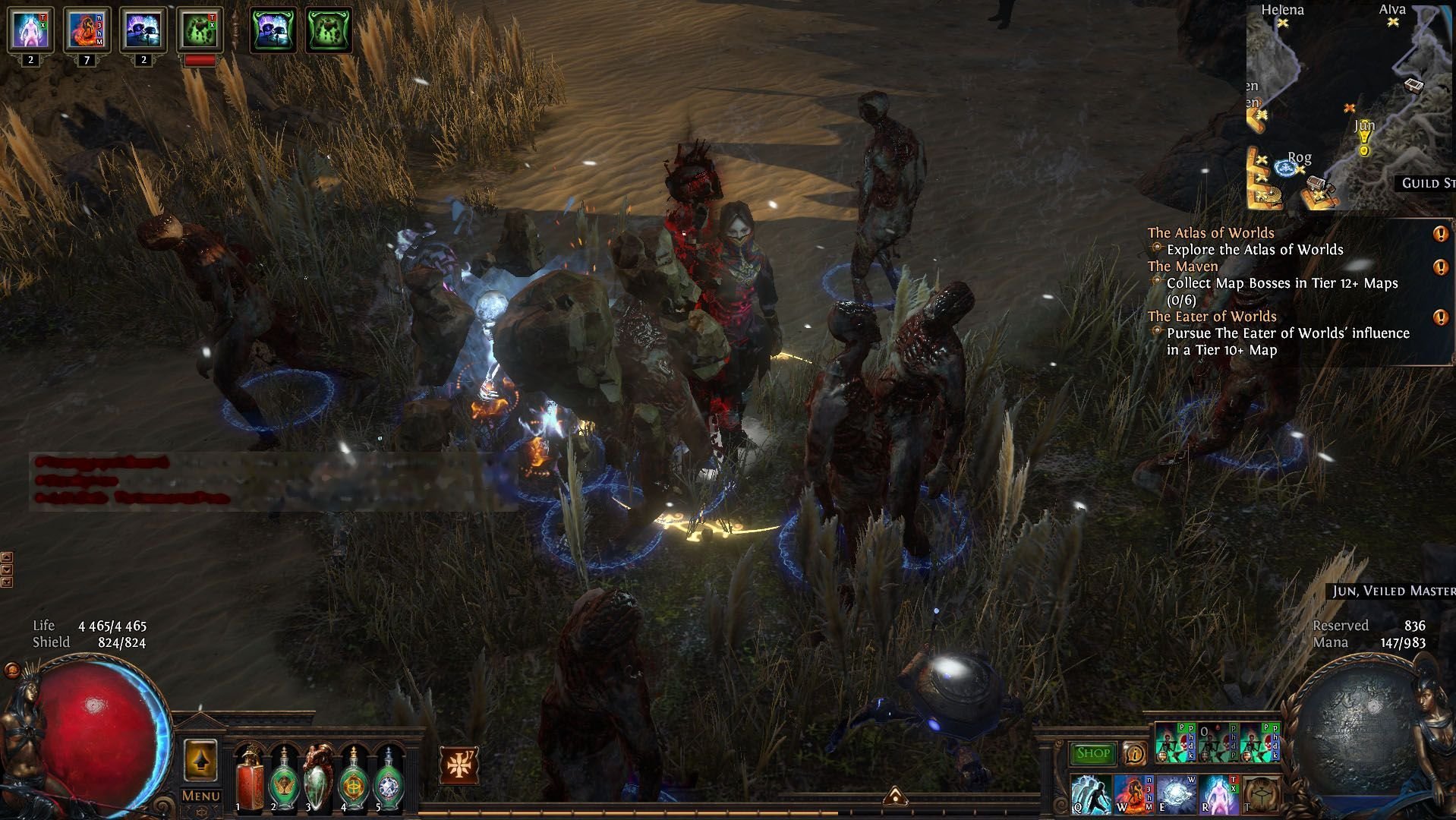
Is Path of Exile a Hard Game?
This question is asked by everyone who has ever seen PoE gameplay. Answer is simple: PoE isn’t hard, but it has a huge amount of details and mechanics, which have to be explored for a long time. Thanks to this there is only interest to move on and explore a world full of dangers.
Leagues in PoE — How to Choose?
Leagues and modes are the basic PoE mechanics, dividing players into different modes, such as single-life or single-player exploration. Each is worth talking about separately in order to choose where to start:
League — a temporary option that all beginners should start on. Most often, Leagues lasts about 3 months, during which you can fully level up and get used to the game. At the end all characters are transferred to Standard. Includes selectable options SSF and Hardcore.
Standard — the classics, where all sorts of game mechanics are collected. Time here is not limited and you can play for years. This is where all the characters go after finishing the League, along with the earned currency and obtained items. Contains Hardcore and SSF options;
SSF Solo Self-Found — single player mode where contact with other players is impossible in any way, even if they also choose SSF. Players can deactivate SSF at any time and join other heroes. It is very difficult to develop here, so this mode is definitely not suitable for beginners;
Hardcore — one life mode. If a character is dead, he loses everything in his inventory without the possibility of resurrection. On HC it is possible to interact only with the same mode players, but in HC SSF — play alone. Hardcore mode is not suitable for beginners and only discourage from playing further after a couple of deaths.
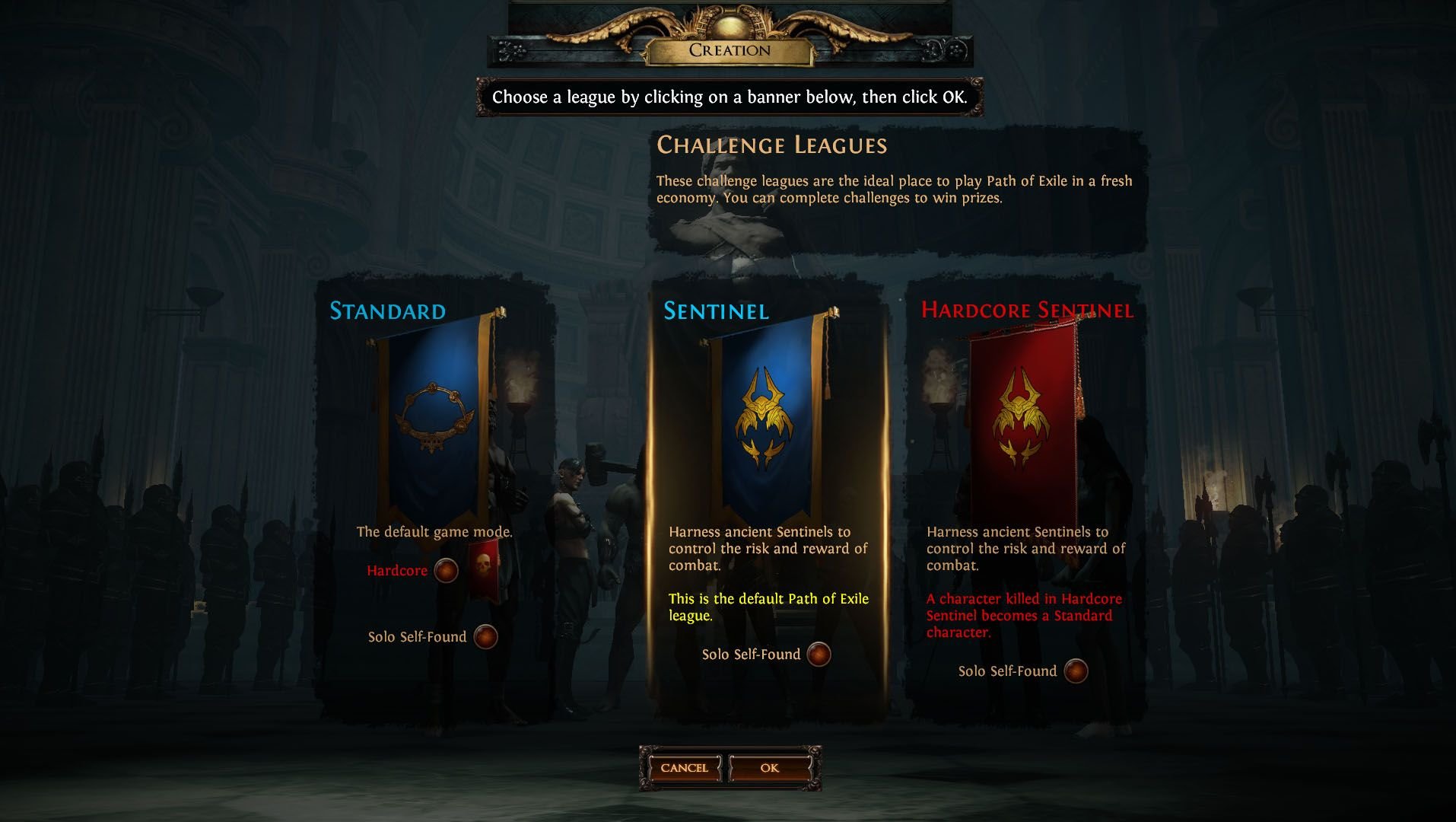
League — the best choice for beginners to start. This mode allows players to learn the basics of trading, the latest game content and mechanics not available on Standard.
Path of Exile League Starter Class
The usual division into Warrior, Mage, and Hunter classes doesn’t exist here. Each character in PoE differs only in starting position in the passive skill tree, some initial characteristics and Ascendancy talents that players get after completing the Labyrinth. Which is the best Path of Exile league starter class?
Ranger — a ranged fighter, capable of destroying crowds of enemies with a bow. The best Path of Exile character for beginners because you don’t have to get close and abilities deal a lot of damage. Have 14 str, 32 dex, 14 int. Ascendancy classes — Deadeye, Pathfinder, Raider;
Witch — supports his allies with different augmentations, resurrects dead bodies and makes them fight on his side, and in battle uses powerful spells of different magic schools. Have 32 int, 14 dex, 14 str. Ascendancy classes — Necromancer, Elementalist, Occultist;
Marauder — a powerful warrior with a huge amount of life. He can withstand the onslaught of hundreds of enemies and literally shred them into tiny particles, causing shockwaves, magma bursts, and earthquakes. Have 32 str, 14 dex, 14 int. Ascendancy classes — Juggernaut, Berserker, Chieftain;
Scion — unique class in PoE. Opens after opening a cell in Act 3. Have 20 str, 20 dex, 20 int. Сharacteristics balance affects the creation of many builds. One Ascendancy class — Ascendant;
Duelist — Ranger + Marauder mix. Deals a lot of damage, has good survivability, attack speed, and evasion rate. Have 23 srt, 23 dex, 14 int. Ascendancy classes — Slayer, Champion, Gladiator;
Templar — Marauder + Witch mix. Pays preference to elemental damage in close combat. Uses staves, scepters, spells. Have 23 str, 14 dex, 23 int. Ascendancy classes — Hierophant, Guardian, Inquisitor;
Shadow — Ranger + Witch mix. Fighting in close combat using daggers/claws. Has a high rate of critical damage and wields traps/mines. Ascendancy classes — Saboteur, Trickster, Assassin.
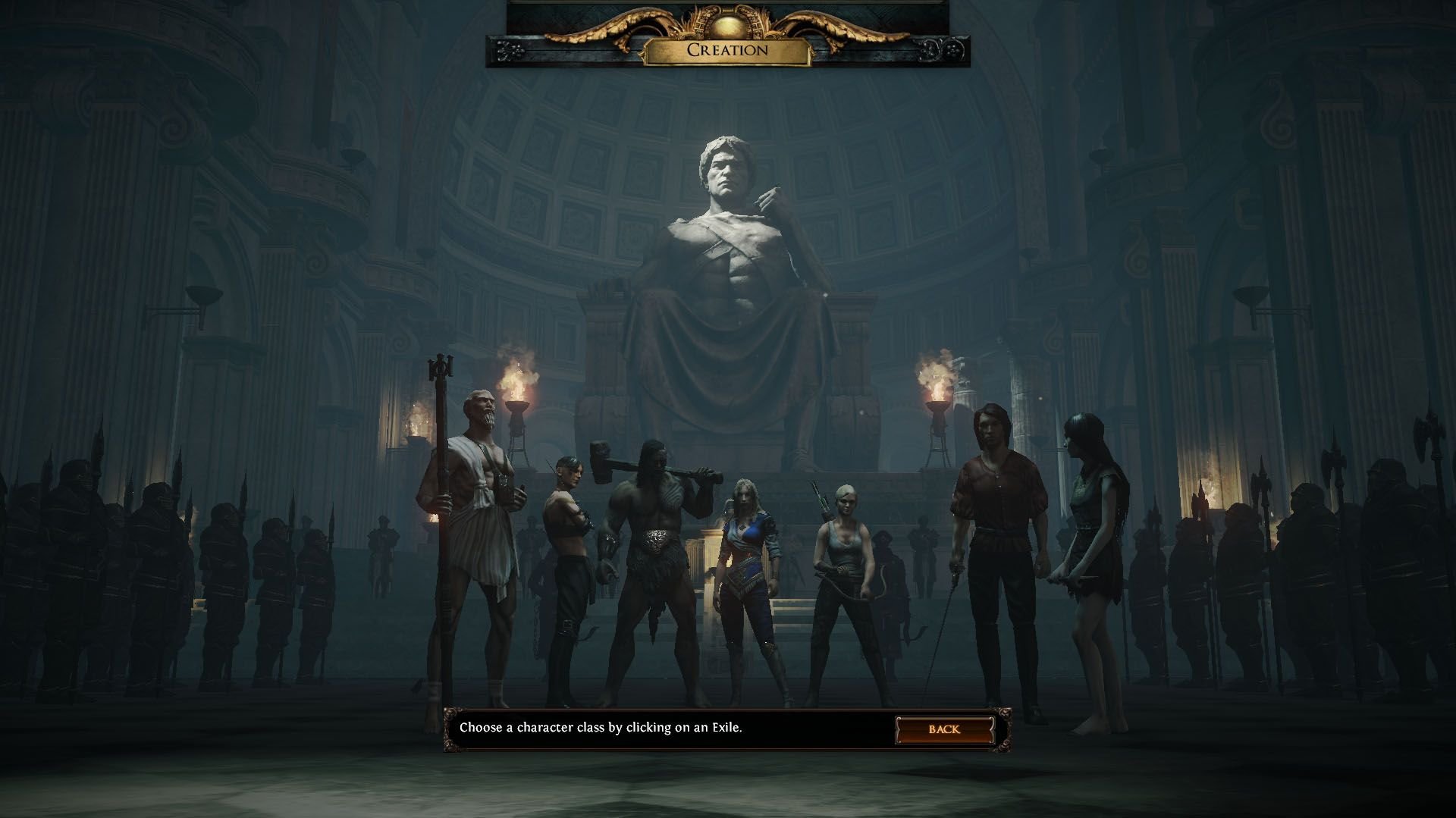
Duelist, Templar, Scion and Shadow are also good options to start, but it is better to pay attention to Marauder, Witch or Ranger first. There is no particular priority in class selection. Before starting, it’s best to familiarize yourself with the starting builds and choose one that looks better visually. Class characteristics require separate attention, because they directly affect most of the abilities, requirements to wear items or gems levels.
How to Play Path of Exile?
Character creation is complete and it’s time to begin adventures in Wraeclast. Gameplay begins with an appearance on a sandy beach, where danger lurks everywhere and the undead is trying to eat a man. After killing him, players get the first gem, which needs to move to the corresponding colored socket in gear. Your first ability will appear on the panel. Read the important gameplay moments below to understand how to play Path of Exile correctly.
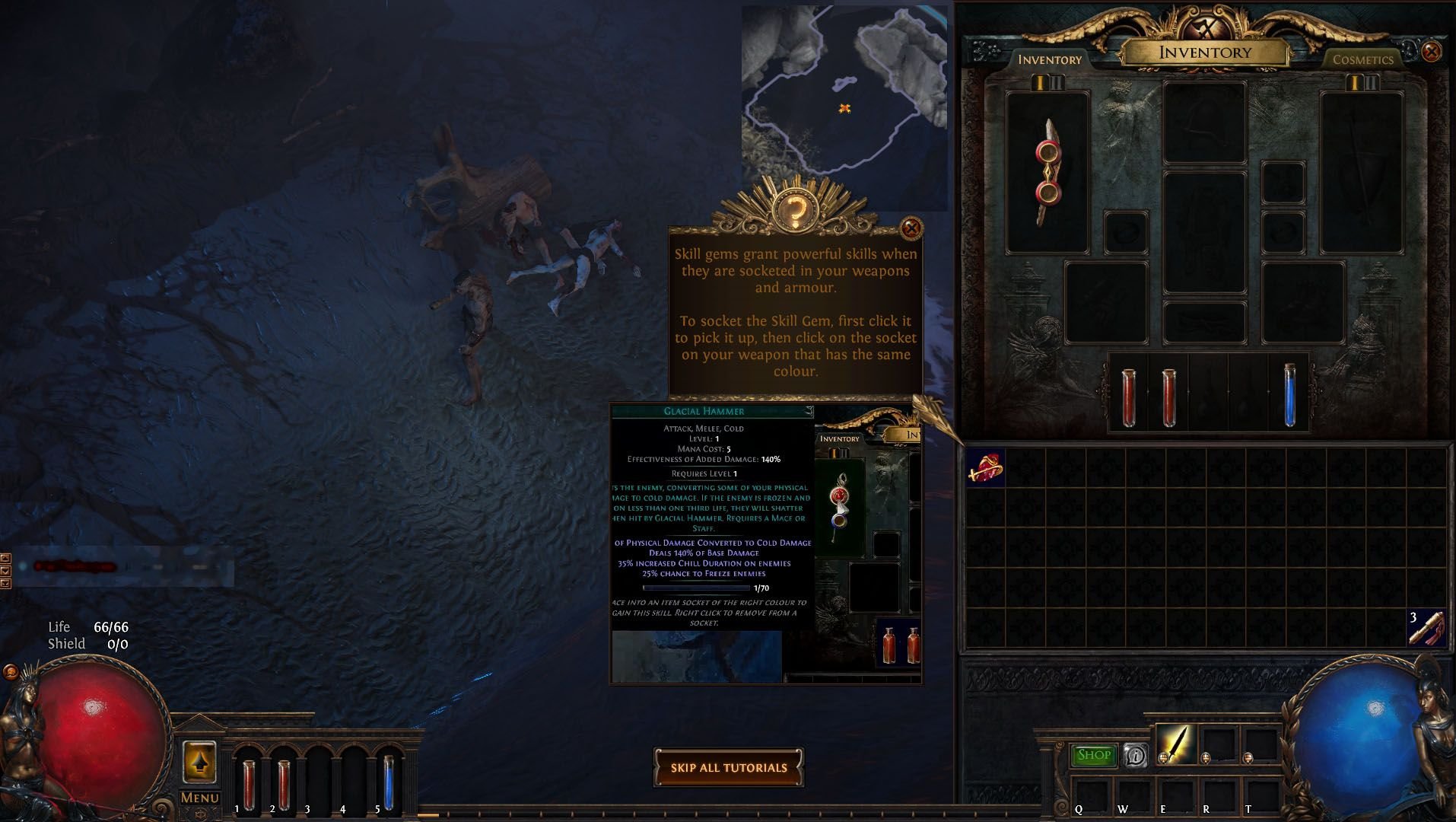
PoE Passive Skill Tree
The first location is easy, but at the end heroes meet a dangerous enemy, whose killing brings a second level and open access to the Passive Talent Tree. Open it with the plus sign next to the experience bar or with the “P” key. Now the most important thing is not to be frightened. Talent tree – not abilities, but only passives that gradually strengthen a character.
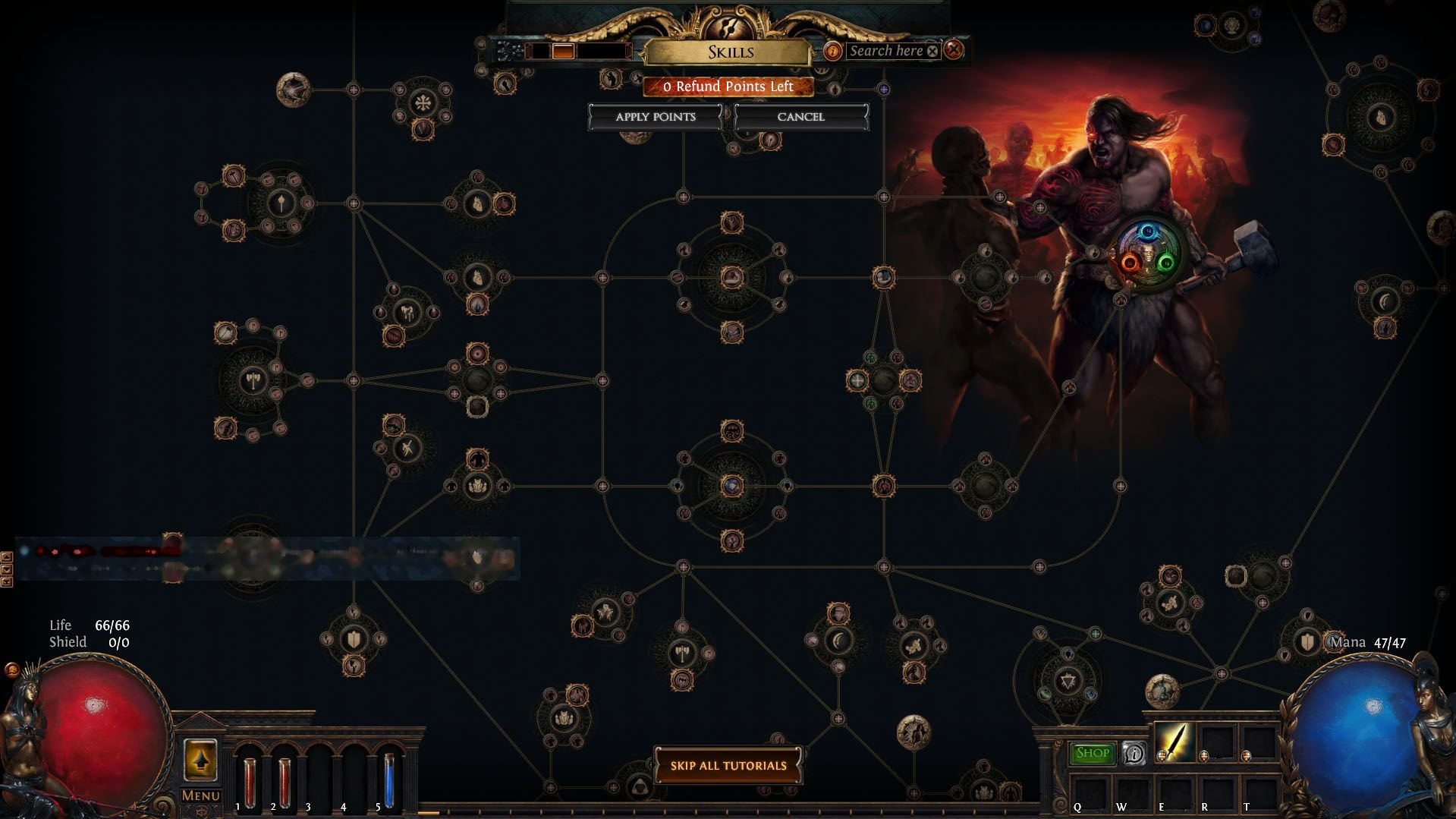
To create a build it is necessary to allocate talents correctly, but beginners should refer to guides, as this directly affects the damage and character’s survivability. If you have any problems with PoE Starter Builds — turn to the professionals, who will tell you about game basics and make your character a real devil hunter.
Path of Exile Fast Leveling
As in all Action RPGs — kill a huge number of enemies to gain experience in Path of Exile. Fastest way to level in PoE is a campaign walkthrough. There are 10 acts where players learn the history of the world and complete quests. Although the process is not difficult, we have compiled useful leveling tips that will help get to the endgame content faster:
1. Link abilities — not only tree talents, but also gems are passive. Items usually have a link that allows you to enhance abilities with multiple gems. Go to Menu-Options-UI-Items and turn on Always Show Sockets for more convenience;
2. Buy starter items — character’s damage mostly depends on weapons. You can’t worry about killing opponents and leveling speed if you visit trading platforms and buy new weapons in time. Do not trade on third-party resources. In PoE it is customary to use Chat, PoE.Trade or pathofexile.com;
3. Don’t skip anything — all campaign quests reward skill books that give Passive Talent Points or Refund Points;
4. Pass Labyrinths – this is a unique activity that allows you to get additional passive talents in a separate tree called Ascendancy. Each class has 3 of these trees, and passives there are much stronger than in normal one;
5. Choose bandits – in the second act there is a quest “Deal with the Bandits”. It must be completed by choosing Alira, Kraityn, Oak or by killing them all. Completing one option gives a powerful boost or 2 talent points when killing all bandits.
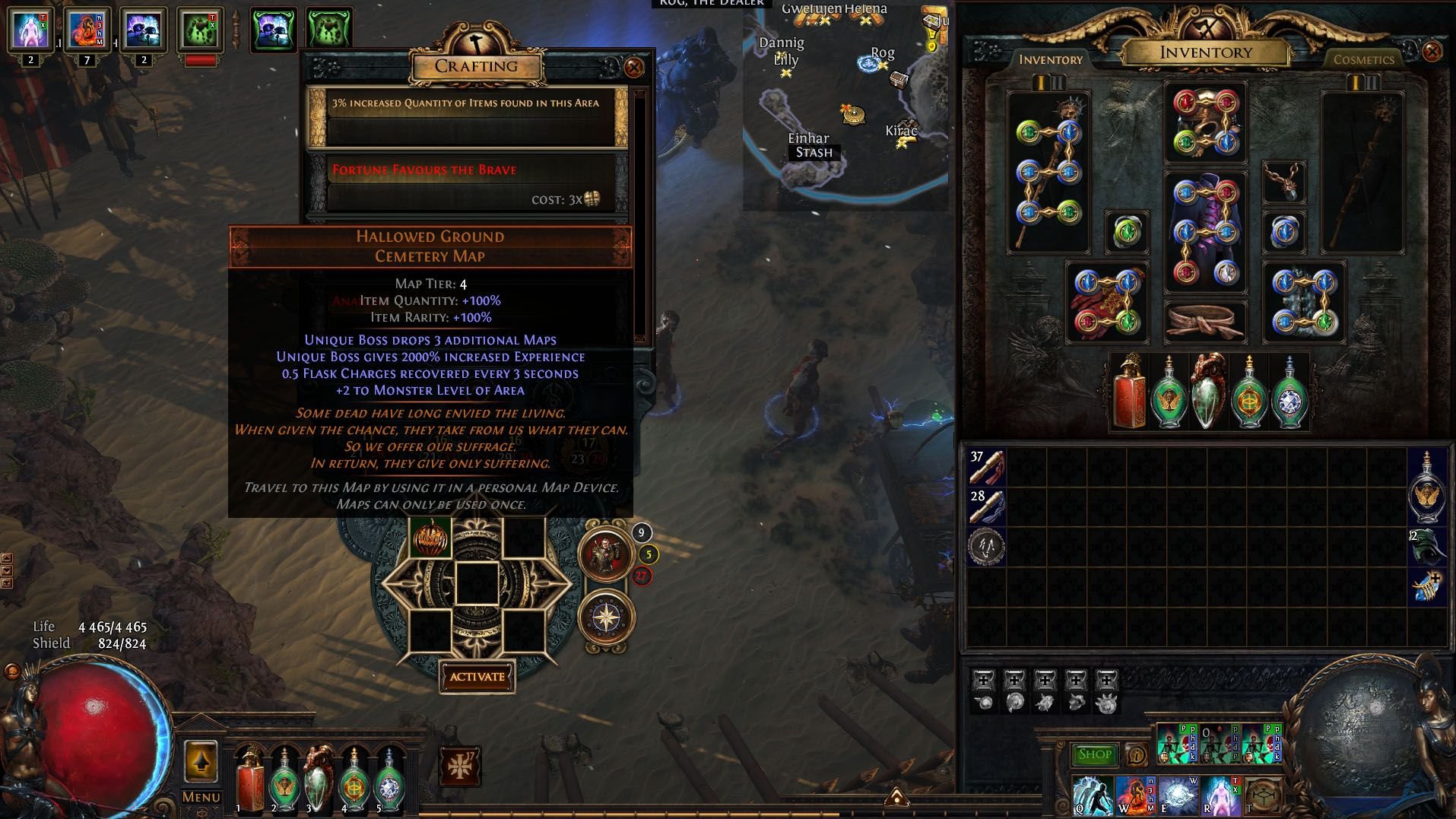
A combination of these tips helps you to quickly complete the campaign, leveling phase, and start mastering Atlas. Main leveling phase will end at level 68. After killing Kitava the endgame content begins, where it is necessary to finish a build and farm maps.
PoE Beginners Tips & League Start
Wraeclast world is huge and not easy to understand. Newcomers are often confused about mechanics or don’t realize why opponents kill them and damage is very low. There are many reasons for this, but to make gameplay fun, learn some beginners tips:
1. Equipment – find or buy items with +X to maximum life or Elemental Resistances. This will greatly increase character’s survivability and make gameplay more comfortable;
2. Loot Filter – one of the most important PoE aspects. The screen is almost constantly littered with junk, so just use filterblade. There you can find ready-made filters or create a new one according to your preferences;
3. Use flasks – this is another important thing, because without them it’s easy to die. Flasks also help characters move faster or deal more damage;
4. Learn the currency – PoE has many orbs that can be very expensive. Chaos, Exalted, Alchemy, Chromatic and Fusing Orbs are basic, which players trade. They are the counterpart of gold/silver from other games;
5. Use Stash – it allows you to move items to other characters. It is account-wide and items will not disappear. Ideally, purchase Currency + Premium Stash Tabs in the Shop. It helps to sort items and put them up for sale;
6. Community is beautiful – ask for help in chat. Players in Path of Exile are very kind and responsive, they will help or give some advice. Don’t be surprised if they write “TY GL” after each trade.
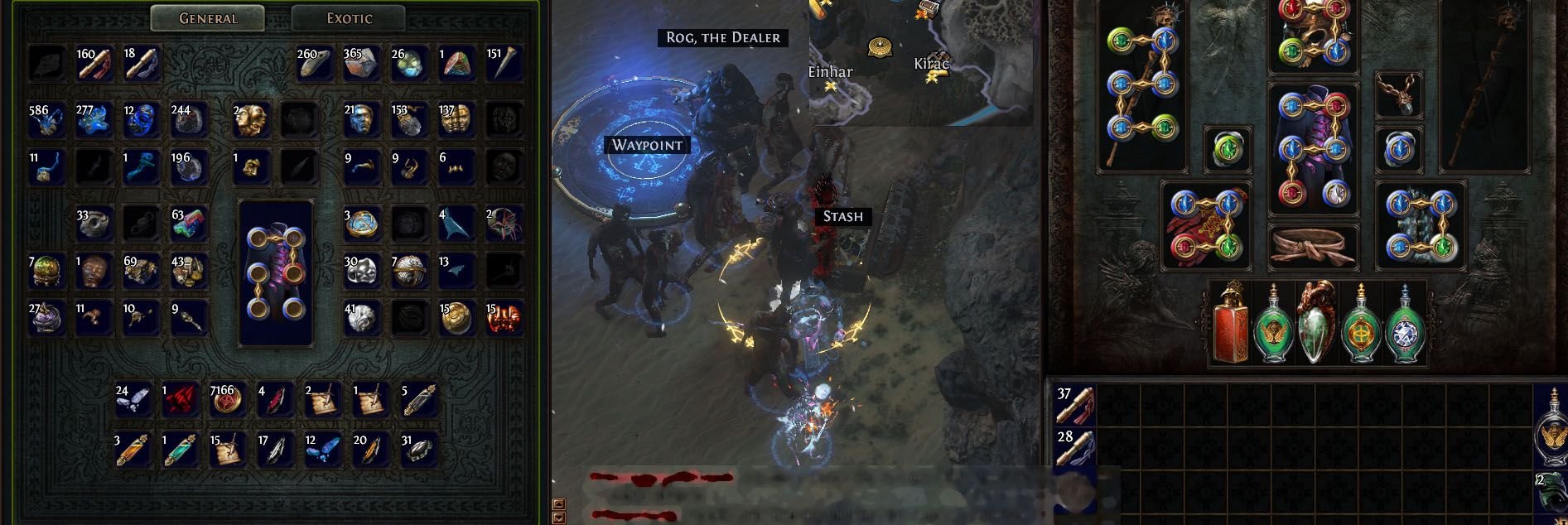
PoE is a great game that is worth every ARPG lover’s attention. A new league called Sentinel has recently launched, bringing many new items, mechanics, and currencies. It’s a great time to start, but difficulties await at every step, and if you need help with Sentinel challenges, knowledgeable players are always ready to help.

Comments